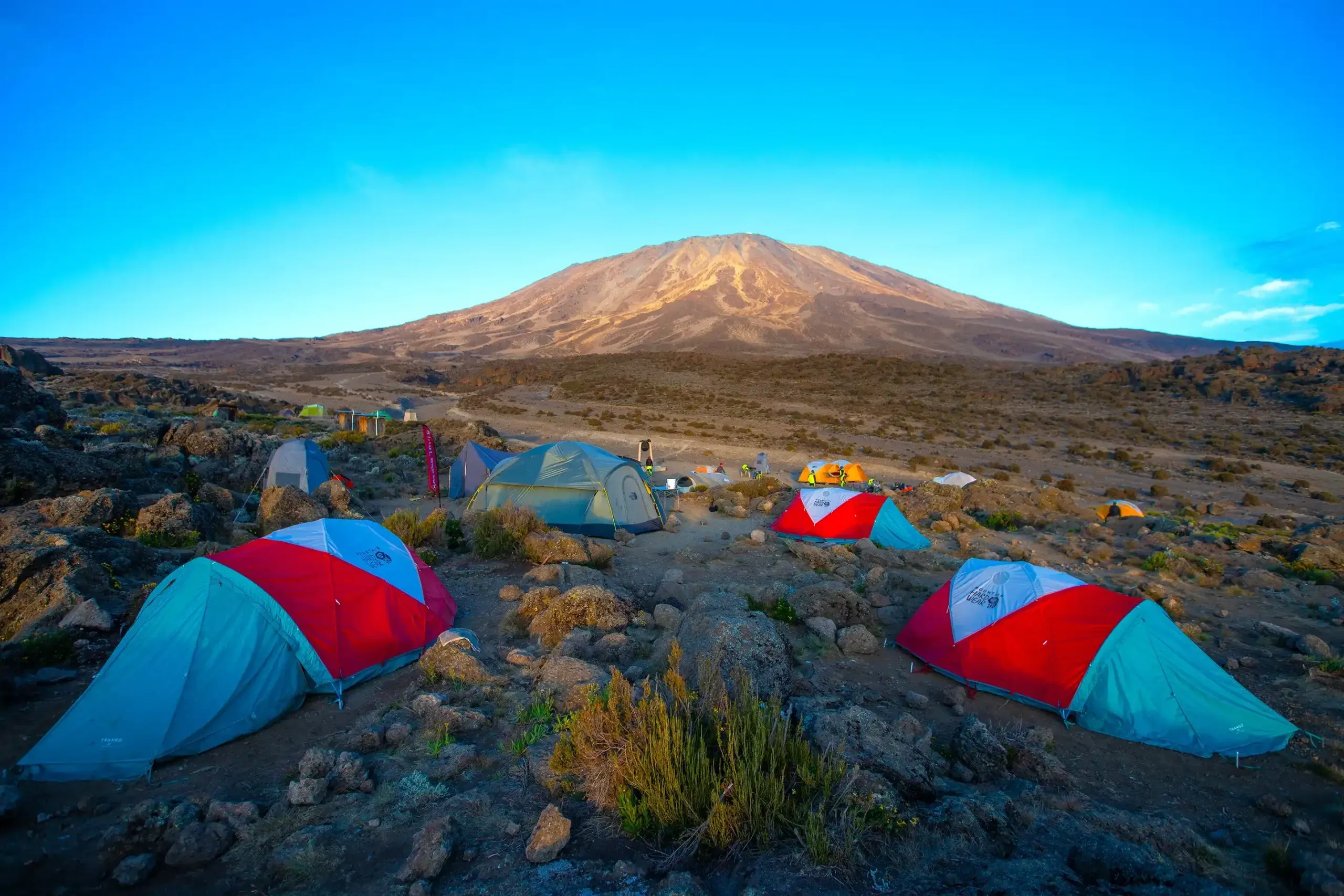7 Day Rongai Route – Kilimanjaro Climb Package
The 7 day Rongai Route is a peaceful and less crowded way to summit Mount Kilimanjaro, starting from the northern side near the Kenyan border. It’s perfect for trekkers who want a slower ascent for better acclimatization, increasing summit success while enjoying varied scenery including forest, moorland, alpine desert, and spectacular views of Mawenzi and Kibo peaks. This route offers a more gradual climb and a unique experience compared to the popular southern routes.

At a Glance
Duration: 7 Days on the mountain
Route Type: Camping accommodation
Start Point: Rongai Gate
End Point: Marangu Gate
Difficulty: Moderate to challenging
Scenery: Forest, moorland, alpine desert, and glacial landscapes
Best For: Trekkers seeking better acclimatization, less crowded trails, and a scenic northern approach
Detailed Itinerary – 7 Day Rongai Route
Day 1: Rongai Gate to Simba Camp
Begin your trek after park registration at Rongai Gate. You hike through a peaceful forest, spotting wildlife like colobus monkeys, before reaching Simba Camp. The trail is gentle, allowing your body to start adjusting to altitude.
Day 2: Simba Camp to Second Cave Camp
Trek up through moorland with expansive views of the Kenyan plains and Kilimanjaro’s peaks. The trail remains gradual, ideal for acclimatization. Rest and take a short acclimatization walk upon arrival at Second Cave Camp.
Day 3: Second Cave Camp to Kikelewa Camp
Continue through moorland terrain dotted with giant groundsels and lobelias. The hike is longer but steady, leading to Kikelewa Camp. Afternoon rest helps prepare for the steeper climb ahead.
Day 4: Kikelewa Camp to Mawenzi Tarn Camp
Ascend steeply to the alpine desert zone, surrounded by rugged Mawenzi peaks. Mawenzi Tarn Camp offers dramatic mountain views and a good place to acclimatize further.
Day 5: Mawenzi Tarn Camp to Kibo Hut
Cross the alpine desert “saddle” between Mawenzi and Kibo, the highest peak. Arrive at Kibo Hut to rest before the summit attempt the next day.
Day 6: Summit Day – Kibo Hut to Uhuru Peak, then descend to Horombo Hut
Start your summit push just after midnight, climbing slowly to Gilman’s Point (5,685m) and onward to Uhuru Peak (5,895m), Africa’s highest point. After celebration and photos, descend first to Kibo Hut for a rest, then continue descending to Horombo Hut for overnight recovery.
Day 7: Horombo Hut to Marangu Gate
Descend through moorland and rainforest, exiting at Marangu Gate (1,870m) where you’ll receive your summit certificate. Transfer back to your hotel to celebrate your success.
What's Included
All Kilimanjaro National Park entry fees
Camping accommodation and camping equipment
Professional mountain guides, porters, and cooks
All meals on the mountain
Drinking water and hot drinks
Rescue fees and oxygen cylinder
Pre- and post-trek briefing
Transportation to Rongai Gate and from Marangu Gate
Summit certificate
What's Not Included
International flights and visas
Travel insurance
Tips for guides and porters
Personal trekking gear (sleeping bags, boots, etc.)
Accommodation before and after the trek (can be added on request)
Extra snacks and beverages
Portable toilets (available at extra cost)
